Let’s be real – eating healthy sounds great until you’re staring at an empty fridge or a complicated recipe that takes forever. That’s where healthy recipe apps come in. They’re like having a friend who knows exactly what you need: quick, tasty meals that don’t wreck your goals. I’ve checked out a bunch of them, from apps that help you plan your week to ones that just give you the recipe without the fluff. Here’s a rundown of some solid options that can make cooking less of a chore and more of something you actually enjoy.

1. ReciMe
At ReciMe, we’ve built an app that helps you cook and eat more mindfully without the stress. Whether you’re trying to eat more whole foods, reduce processed ingredients, or simply make better use of the fresh items in your kitchen, we’ve made it easy to save and organize your favorite healthy meals. Available for iOS, ReciMe lets you collect recipes from Instagram, TikTok, Pinterest, Facebook, YouTube, screenshots, and notes-all in one place. And through our Instagram and Facebook communities, we share practical cooking tips, healthy swaps, and inspiration from real home cooks.
But healthy eating goes beyond recipe storage-so we’ve added features that support daily habits. With our built-in nutrition calculator (currently in beta), you can get a better understanding of what’s in your meals. You can also plan your week with our meal planner, create smart grocery lists sorted by aisle or recipe, and scale ingredients to suit your needs. Whether you’re meal prepping for the week or just looking for a lighter dinner tonight, we’ve designed ReciMe to help you stay organized, eat better, and still enjoy the cooking process.
Key Highlights:
- Available for iOS with optional web access via desktop
- Save healthy recipes from Instagram, Facebook, TikTok, Pinterest, and more
- Built-in meal planner and nutrition calculator (beta)
- Smart grocery lists sorted by recipe or aisle
- Chrome extension for saving recipes from your browser
- Free version with a premium upgrade for added features
Who it’s best for:
- iOS users looking to save and cook healthier meals without extra hassle
- People who want to view nutrition estimates for your meals and stay organized with planning and shopping
- Home cooks who collect recipes from social media and want to eat more intentionally

2. The Photo Cookbook
The Photo Cookbook centers its approach on visual recipe guidance. They provide a collection of recipes accompanied by detailed photos for each step, aiming to make the cooking process clearer, especially for those who prefer visual instructions over text. Their focus is on straightforward dishes, often categorized by type, such as quick meals or baking.
They provide a collection of recipes accompanied by detailed photos for each step, aiming to make the cooking process clearer. The Photo Cookbook limits its scope to providing recipes without delving into broader meal planning or shopping tools.
Key Highlights:
- Photo-based step-by-step recipes
- Focus on simple, categorized dishes
Who It’s For:
- Visual learners who like seeing each cooking step
- Beginners needing clear recipe guidance
- Users who prefer a focused recipe tool

3. Paprika
Paprika offers a system for managing recipes and organizing kitchen tasks. They allow users to save recipes from websites using a built-in browser, then store and categorize them for easy access. Their tools extend to meal planning and grocery list creation, syncing across devices to keep everything consistent.
They also provide practical features like scaling ingredient amounts, converting measurements, and keeping the screen on during cooking. Their approach avoids pre-loaded recipe databases, instead relying on users to build their own collections. This setup caters to those who want control over their recipe library and related planning.
Key Highlights:
- Recipe saving from websites
- Meal planning and grocery list tools
- Device syncing and cooking aids
- Customizable recipe organization
Who It’s For:
- People who collect recipes from online sources
- Users wanting a structured meal planning system
- Those needing cross-device access
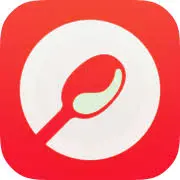
4. MealBoard
MealBoard combines recipe storage with meal planning and pantry tracking. They let users input recipes manually or copy them from sources, then organize them into a personal collection. Their grocery list feature ties into this, pulling ingredients from planned meals.
They also offer a pantry function where users can log staples and track what’s on hand, adjusting shopping lists accordingly. The focus is on practical management, aiming to reduce waste and streamline preparation. Their system is built for those who like having recipes, plans, and inventory in one place.
Key Highlights:
- Recipe upload and organization
- Meal calendar with grocery list generation
- Pantry tracking for inventory
- Focus on reducing food waste
Who It’s For:
- Planners who schedule meals ahead
- Users who track pantry stock
- People wanting an all-in-one kitchen tool
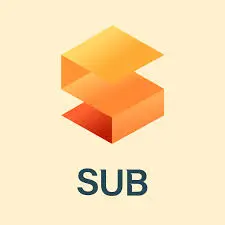
5. Substitutions
Substitutions focuses on helping users adapt recipes when ingredients are missing. They provide a database of ingredient alternatives, covering common swaps like replacing butter with oil or flour with gluten-free options. Their aim is to assist cooks in keeping recipes workable despite pantry gaps.
Beyond substitutions, they don’t offer extensive recipe collections or planning tools, keeping their scope narrow. They serve as a reference point, useful during cooking rather than as a full kitchen management system. This simplicity suits those who need quick fixes without extra features.
Key Highlights:
- Database of ingredient swaps
- Focus on recipe adaptability
- Minimalist approach without planning tools
Who It’s For:
- Cooks who often run out of ingredients
- People looking for simple substitution ideas
- Users needing a lightweight reference tool

6. Healthy Recipes – Tasty Food
Healthy Recipes – Tasty Food emphasizes recipes that balance nutrition and flavor. They offer a variety of dishes from online sources, appealing to those who want meals that taste good without heavy processing. Their collection is curated to appeal to those who want meals that taste good without heavy processing.
They keep their service straightforward, focusing on recipe delivery rather than additional tools like shopping lists or meal planners. Their approach suits users who prefer browsing pre-selected healthy options over building their own system, with an emphasis on accessibility and simplicity.
Key Highlights:
- Curated healthy recipe collection
- Emphasis on nutrition and taste
- Simple, recipe-focused platform
Who It’s For:
- Health-focused eaters
- Users who want ready-made recipe ideas
- People preferring minimal features
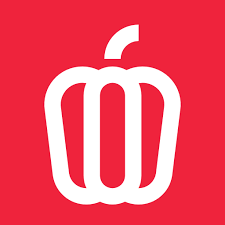
7. Just the Recipe
Just the Recipe aims to strip recipes down to essentials. They take online recipes and remove extra text like stories or tips, presenting only ingredients and steps. Their goal is to save time for users who want quick access to cooking instructions without scrolling through long articles.
They rely on users inputting recipe URLs to process, rather than offering their own database. This keeps their service lean, with no added planning or shopping features. It’s a niche tool for those who value efficiency over a broader kitchen management system.
Key Highlights:
- Simplified recipe extraction from URLs
- No extra content beyond instructions
- Focus on speed and clarity
Who It’s For:
- Users annoyed by recipe blog clutter
- Cooks who want fast instructions
- People needing a basic tool

8. SideChef
SideChef provides recipes with a focus on step-by-step guidance. They offer a library of dishes, often with photos or videos for each stage, aiming to support users through the cooking process. Their platform includes options for various diets, like vegan or keto, to suit different preferences.
They also integrate tools for meal planning and grocery lists, connecting recipes to practical next steps. Features like voice commands during cooking add a hands-free element. Their approach combines recipe access with support for planning and execution.
Key Highlights:
- Step-by-step recipe guidance
- Meal planning and grocery tools
- Voice command option
- Diet-specific recipe filters
Who It’s For:
- Cooks who like detailed instructions
- Users wanting planning features
- People who value hands-free cooking aids

9. SuperCook
SuperCook helps users cook with what’s already in their kitchen. They ask people to input available ingredients, then generate recipe ideas based on that list. Their system pulls from a wide range of online sources to match dishes to what’s on hand.
They also suggest recipes that might need just one or two extra items, encouraging flexibility. Their focus stays on recipe generation rather than planning or tracking tools, making it a go-to for spontaneous cooking with minimal prep.
Key Highlights:
- Recipe ideas from available ingredients
- Suggestions with minimal extras
- Broad recipe sourcing
Who It’s For:
- People cooking with pantry staples
- Users who avoid grocery trips
- Spontaneous cooks

10. Plant Jammer
Plant Jammer targets plant-based cooking with a creative twist. They use an AI-driven system where users input ingredients, and the app suggests vegetarian or vegan recipes. Their focus is on reducing waste by making use of whatever’s in the fridge.
They allow tweaking of generated recipes to fit personal tastes, offering some customization. Their service sticks to recipe creation without broader planning or shopping features, appealing to those who enjoy experimenting with plant-based meals.
Key Highlights:
- AI-generated plant-based recipes
- Ingredient-based suggestions
- Recipe customization option
Who It’s For:
- Vegetarians and vegans
- Users with leftover ingredients
- Cooks who like experimenting
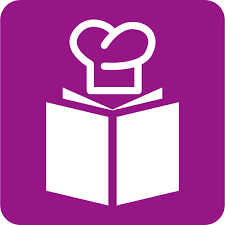
11. My Recipe Box
My Recipe Box serves as a digital organizer for personal recipes. They let users import recipes from the web or add their own manually, then sort them into categories. Their aim is to provide a space for keeping favorite dishes in one accessible spot.
They offer basic search and organization tools but don’t extend into meal planning or grocery features. Their straightforward setup fits those who want a simple way to store and find recipes without extra layers of functionality.
Key Highlights:
- Recipe import and manual entry
- Category-based organization
- Simple search functionality
Who It’s For:
- People with personal recipe collections
- Users wanting basic storage
- Cooks who prefer simplicity

12. Kitchen Pal
KitchenPal combines pantry tracking with recipe ideas. They let users log ingredients they have, then suggest dishes based on that inventory. Their system also includes barcode scanning to add items easily, aiming to keep the pantry up to date.
They extend into shopping list creation and meal planning, tying everything together for a fuller kitchen toolset. Their focus is on practicality, helping users manage what’s on hand while planning what’s next.
Key Highlights:
- Pantry tracking with barcode scanning
- Recipe suggestions from inventory
- Shopping list and meal planning tools
Who It’s For:
- Users who track pantry stock
- People wanting recipe-to-shopping flow
- Cooks who like tech aids

13. Tasty
Tasty delivers a collection of recipes with a strong visual focus. They provide short, engaging videos for each dish, showing the cooking process in a quick format. Their library covers a range of cuisines and skill levels, often trending toward popular or creative meals.
They include basic filtering by diet or type, but their service stays centered on recipes rather than planning or shopping tools. Their approach suits those who enjoy browsing visually appealing dishes for inspiration.
Key Highlights:
- Video-based recipe instructions
- Wide variety of dishes
- Diet and type filters
Who It’s For:
- Visual learners who like videos
- Users seeking recipe inspiration
- Cooks of varying skill levels
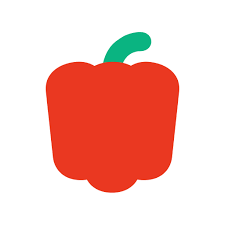
14. MyRealFood
MyRealFood promotes recipes using whole, unprocessed ingredients. They offer a selection of dishes aimed at healthy eating, with a community aspect where users can share their own recipes. Their focus is on real food principles, avoiding artificial additives.
They keep their platform simple, sticking to recipe sharing without extensive planning or tracking features. This suits those who prioritize clean eating and want a space to explore or contribute similar ideas.
Key Highlights:
- Whole-food recipe focus
- Community recipe sharing
- Simple platform design
Who It’s For:
- Clean eating enthusiasts
- Users who share recipes
- People wanting basic healthy options

15. HelloFresh
HelloFresh ties recipes to a meal kit delivery service. They provide a rotating menu of dishes users can choose from, with ingredients shipped directly to them. Their recipes come with detailed steps, aiming to simplify cooking for those who want pre-portioned supplies.
They also offer a digital recipe library for past kits, accessible via their app, though the core is tied to their subscription model. Their system blends recipe access with convenience, focusing on reducing prep work.
Key Highlights:
- Meal kit recipes with delivery
- Detailed cooking instructions
- Digital recipe archive past kit library
Who It’s For:
- People who want meal kits
- Users who like pre-planned meals
- Cooks seeking convenience

16. Pepperplate
Pepperplate offers a platform for storing and organizing recipes. They allow users to import recipes from websites or add them manually, then manage them in a personal collection with meal planning and grocery list tools.
They keep their focus on recipe management rather than a pre-built recipe database, relying on users to build their own. Their service has seen limited updates over time, reflecting a simpler, older design compared to newer apps.
Key Highlights:
- Recipe import and storage
- Meal planning and grocery lists
- Device syncing
Who It’s For:
- Users with existing recipe collections
- People wanting basic planning tools
- Those okay with older interfaces
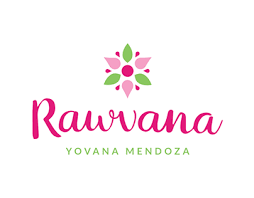
17. Rawvana
Rawvana centers on plant-based recipes, emphasizing fresh, unprocessed ingredients with a mix of raw and cooked vegan dishes. Their aim is to support a raw vegan lifestyle with simple, nutrient-focused meals.
They stick to recipe delivery without branching into planning or shopping features, keeping their scope tight. This suits those committed to raw eating who want straightforward ideas without extra tools.
Key Highlights:
- Raw vegan recipe focus
- Simple, fresh ingredient emphasis
- Recipe-only platform
Who It’s For:
- Raw food enthusiasts
- Vegans seeking no-cook options
- Users wanting minimal features
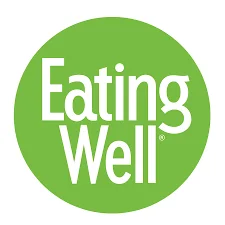
18. EatingWell
EatingWell delivers recipes with a health – conscious slant. They offer a library of dishes designed to balance nutrition and taste, often highlighting low-calorie or high-fiber options. Their content comes from a long-standing magazine background.
They provide basic filtering by diet or meal type and include shopping list creation based on selected recipes. Their focus remains on curated recipes, appealing to those who want vetted, healthy ideas.
Key Highlights:
- Health-focused recipes
- Magazine-backed content
- Diet and meal type filters
Who It’s For:
- Health-minded cooks
- Users who trust curated sources
- People wanting simple recipe access
Conclusion
Picking the right healthy recipe app really comes down to what you need in your day-to-day life. If you’re someone who loves planning everything out, there’s an app for that. If you just want quick ideas without all the extra chatter, there’s something for you too. Honestly, it’s less about finding the “best” one and more about what fits your vibe – whether that’s cooking with whatever’s in your pantry or following step-by-step videos for a fancy salad. Give a couple of these a try, see what sticks, and you’ll be whipping up healthy meals without even thinking twice. Eating well doesn’t have to be a hassle, and these apps prove it!

Leave a Reply